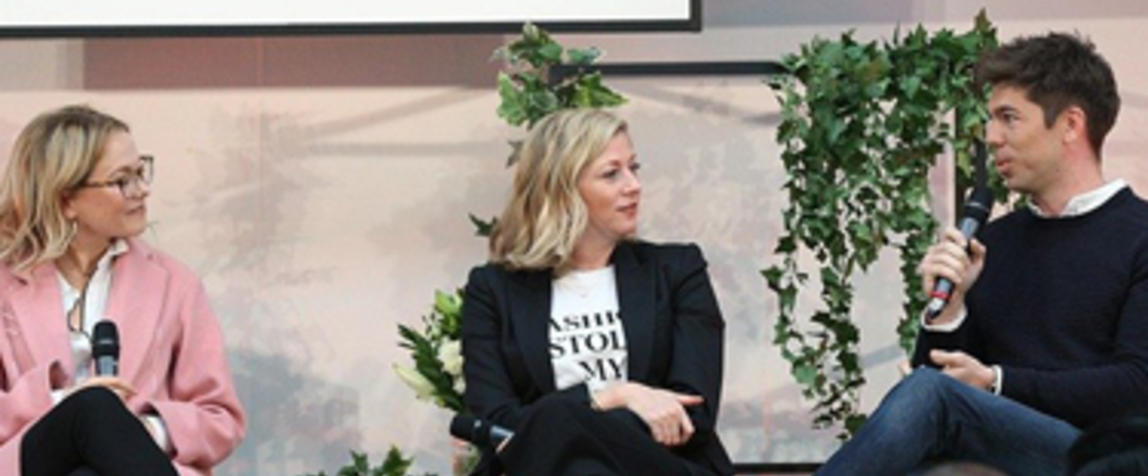Recently held in Sydney, the Millennial 20/20 Summit was designed to spark discussion and share best practice about strategies and techniques for marketing to a Millennial audience. Subtitled the “future vision for next-gen commerce”, it brought together a line-up of speakers that spanned fashion, beauty, travel, retail and hospitality.
Here are some of the key insights gleaned by BD’s general manager, Michelle Blancato, and editorial director, Michelle Bateman, who both attended the two-day event.
Make it personal
Ever found it slightly creepy that the handbag you admired on an ecommerce site is now popping up everywhere from your inbox to your social media feeds? Millennials aren’t just comfortable with this kind of re-targeting, said Jules Lund from influencer platform Tribe, they actively encourage it. As a group, this audience demands content that’s highly relevant and specifically targeted to their needs, and that includes products or content in which they’ve already shown an interest.
Visa head of digital acceptance, Chris Hughes, agrees, noting that 60 per cent of Millennials are comfortable sharing their personal information with retailers (versus 47 per cent of general consumers). The flipside, he said, is that they expect a brand to use all the data it’s gathered to create personalised experiences and information – and they have little tolerance for brands who miss the mark.
CommBank Innovation Labs’ general manager, Tiziana Bianco, went a step further, arguing that personalisation is the new norm and is now expected across all channels. What’s more, if a function or experience is possible on one platform, consumers expect to be able to access similar features elsewhere, including from unrelated businesses. She gave the example of Amazon Prime’s 1-Click ordering functionality, with consumers now expecting similarly streamlined processes from other vendors, such as Optus or Qantas.
Make it meaningful
Many brand representatives spoke about the importance of having a meaningful story to connect with Millennial customer values. According to TOMS Australia managing director John Elliott, 88 per cent of Millennials want to work for or purchase from a brand that has a positive social impact.
Nude By Nature’s global head of digital, Gavin Merriman agrees, saying that his brand’s clean ingredients and no-animal-testing policy helps it to resonate with Millennial customers.
Many brands are already savvy to this selling point, which is why Elliott suggests gaining independent third-party accreditation to verify and add gravitas to a specific quality or message. Where relevant, he recommends B Corp accreditation, which considers social and environmental performance, public transparency and legal accountability, among other qualities.
Make it move
“Motion is the new filter,” said Lund, referring to the full spectrum of moving content, from video to Boomerangs, cinemagraphs to Facebook Live and even animated graphics. Millennials have grown up with ready access to video, and find it more engaging than static images.
Looking for guidelines to get started? Nude By Nature’s Merriman recommended using a landscape format and captioning all videos. “Don’t make it too slick,” he added, as it’s important the content feels authentic in a social feed.
When it comes to Facebook, Buzzfeed has found that 40 seconds is an ideal length to maximise the video completion rate on its Tasty platform, said VP brand strategy, David Nemes. (In fact, they’re so committed to this timeframe, they’ve even given it a name – FB40.)
Speaking of Facebook, eBay Australia & NZ has experimented with Live videos with great success. Because of the on-the-spot and often improvised nature of this content, social & content lead Casey Bosward advised brands considering Live videos to set clearly defined guidelines for what is acceptable, and then giving on-air talent the freedom to act within these boundaries.
Make it connected to get the sales
When it comes to conversion to sales, the most successful brands are fully integrating commerce with rich content and experience, says Visa’s Chris Hughes. This is at odds with many brands’ current practice of engaging with consumers far upstream of key commerce moments. A further challenge for retail brands, Hughes says, is to fully integrate the omnichannel experience so that it’s rich, well-rounded and utilising a coherent set of customer data that is dynamically connected in store and online.
For Benefit Australia general manager Beth Glancey, the in-store retail experience must also reflect the brand’s core values. Benefit encourages its on-counter staff to know and follow key beauty influencers, so that they can confidently talk to their millennial customers about specific styles and techniques.
Finally, there was some talk over the two days about the launch of Amazon in Australia. ChannelAdvisor works with retailers and brands on devising Amazon-specific sales strategies, and the company’s Australian managing director, Simon Clarkson, had some specific words of advice for “winning” the Amazon buy box. Scoring this position, he said, came down to a mix of good value offering, fast delivery, positive customer feedback and a strong seller history.

